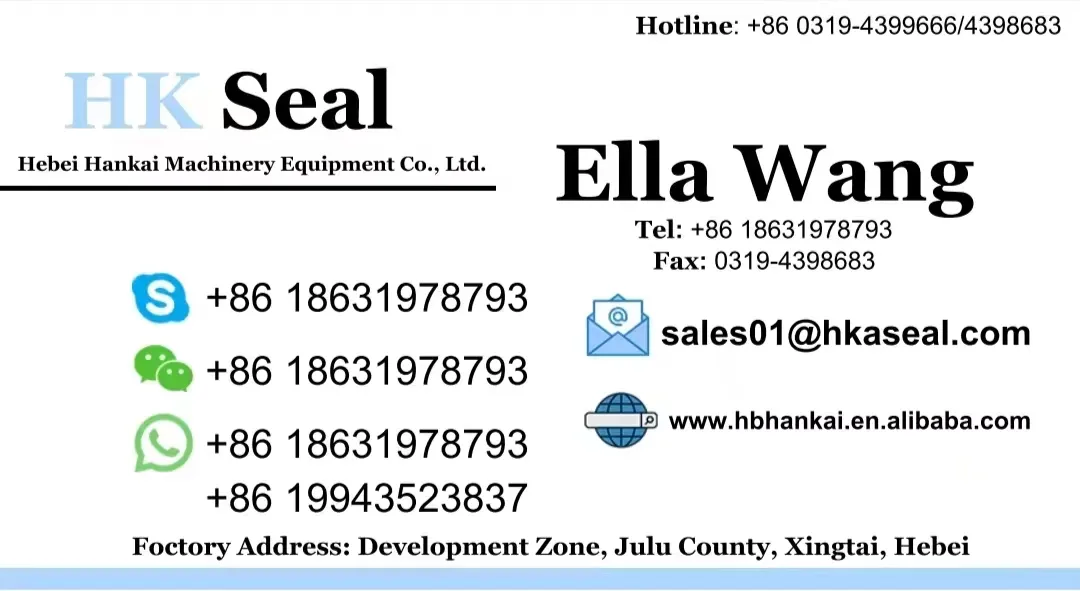Nov . 16, 2024 04:29 Back to list
hydraulic cylinder repair seals
Hydraulic Cylinder Repair Seals A Comprehensive Guide
Hydraulic cylinders play a vital role in various industrial applications, providing the necessary force and motion to operate machinery. Over time, these cylinders can develop leaks, leading to decreased efficiency and increased operational costs. One of the crucial components in maintaining hydraulic cylinders is the seals. Understanding the types of seals, their functions, and the repair process can significantly enhance the longevity and performance of hydraulic systems.
Understanding Hydraulic Seals
Hydraulic seals are designed to prevent fluid leakage and to contain the hydraulic fluid within the cylinder. These seals are vital in ensuring that the pressure created by the hydraulic fluid can effectively transfer power. There are several types of seals used in hydraulic cylinders, including
1. Rod Seals Located at the rod-end of the hydraulic cylinder, rod seals are responsible for preventing fluid leakage where the piston rod exits the cylinder. They also minimize contamination and ensure efficient operation.
2. Piston Seals Found at the piston-end, these seals allow fluid to flow into and out of the chamber while maintaining pressure. They need to withstand high pressure and provide a tight seal against the cylinder wall.
3. Guides/Backup Rings These components support the rod and piston seals, ensuring proper alignment and preventing the seals from extruding under pressure. They help maintain the shape and integrity of the seals during operation.
4. Wipers Although not seals in the traditional sense, wipers play an essential role in keeping dirt and debris from entering the cylinder. They are located at the rod-end and clean the rod as it retracts, prolonging seal life.
Common Issues with Hydraulic Seals
Over time, hydraulic seals can wear out due to various factors, including extended operational hours, extreme temperatures, and harsh working environments. Common problems with hydraulic seals include
- Leaks The most visible sign of seal failure, leaks can result in loss of hydraulic fluid, decreased efficiency, and increased costs. - Contamination Dust, dirt, and other contaminants can compromise the integrity of seals, leading to premature wear and failure. - Extrusion If the seal is not properly supported, it can extrude between the housing and the rod or piston, damaging the seal.
hydraulic cylinder repair seals

Repairing Hydraulic Cylinder Seals
Repairing hydraulic cylinder seals can restore functionality and extend the life of the equipment. Here’s a step-by-step guide to the repair process
1. Identify the Problem Before any repair can take place, it’s essential to diagnose the issue accurately. Look for signs of fluid leakage, inspect the seals for wear, and assess the overall condition of the hydraulic cylinder.
2. Disassemble the Cylinder Carefully remove the hydraulic cylinder from the equipment. Follow safety procedures to ensure that all pressure is released and that the cylinder is not holding any hydraulic fluid.
3. Remove Old Seals Once disassembled, remove the old seals using appropriate tools. Be cautious not to damage any other components while doing this.
4. Clean the Components Clean all parts of the hydraulic cylinder, including the rod, piston, and housing. Ensure that no dirt or debris remains, as this can cause future seal failure.
5. Install New Seals Choose high-quality replacement seals that are compatible with your hydraulic system. Install the new seals carefully, ensuring they are seated correctly and without distortion.
6. Reassemble the Cylinder Put all the components back together, ensuring that everything is aligned correctly. Follow the manufacturer’s specifications for torque settings and installation procedures.
7. Test the Assembly Once the hydraulic cylinder is reassembled, conduct a thorough test to ensure there are no leaks and that the cylinder operates smoothly.
Conclusion
Hydraulic cylinder repair seals are critical for maintaining the efficiency and reliability of hydraulic systems. By understanding the types of seals and the repair process, operators can ensure their hydraulic cylinders remain in peak condition, reducing downtime and operational costs. Regular maintenance and timely seal replacement can go a long way in prolonging the life of hydraulic equipment. With proper attention to detail, the repair process can be completed effectively, ensuring that hydraulic systems continue to perform at their best.
-
Wiper Oil Seal: Our Commitment to Clean Hydraulics
NewsAug.13,2025
-
Hydraulic Oil Seal for Self Discharging Cars
NewsAug.13,2025
-
Hub Oil Seal for Agricultural Tractor Hubs
NewsAug.13,2025
-
Skeleton Oil Seal with NBR Material
NewsAug.13,2025
-
Rotary Lip Seal for High Pressure Applications
NewsAug.13,2025
-
Cylinder Seal Kits Our Legacy of Hydraulic Trust
NewsAug.13,2025
-
Unlocking the Potential of Hydraulic Systems with Essential Sealing Solutions
NewsAug.06,2025
Products categories
















